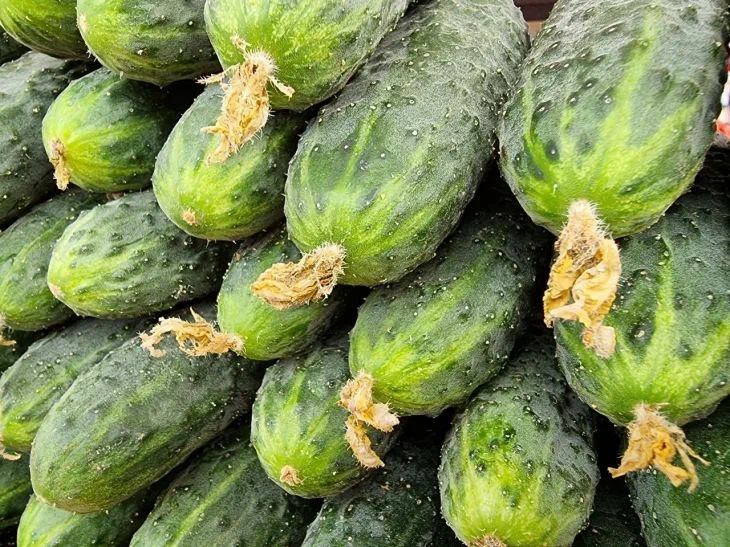Choosing the optimal cucumber variety for a greenhouse is the key to a successful harvest.
There are many varieties that differ in ripening time, yield, disease resistance and taste.
Anastasia Kovrizhnykh , an expert of the online publication "BelNovosti", an agronomist and landscape designer, told how to act in such a situation.
Parthenocarpic or bee-pollinated: pollination features
• Parthenocarpic varieties: do not require pollination by insects, which is especially important for greenhouses. They form fruits without pollination, which guarantees a harvest even under unfavorable weather conditions.
• Bee-pollinated varieties: require pollination by bees or other insects. In a greenhouse, this can be problematic, so when choosing bee-pollinated varieties, it is necessary to ensure insect access to the plants or carry out artificial pollination.

Ripening time: from early to late
• Early ripening varieties: begin to bear fruit 40-45 days after sowing. They allow you to get an early harvest, but their fruiting period is shorter than that of mid-season and late-ripening varieties.
• Mid-season varieties: begin to bear fruit 45-50 days after sowing. They combine the advantages of early and late varieties, providing a long fruiting period and good yield.
• Late-ripening varieties: begin to bear fruit 50-55 days after sowing. They yield the latest harvest, but their fruiting period is the longest.
Disease resistance: protection against phytopathogens
Choose varieties that are resistant to the main cucumber diseases, such as powdery mildew, downy mildew, and root rot. This will help you avoid problems with diseases and get a healthy harvest.
Taste: from salty to sweet
The taste of cucumbers is also an important selection criterion. There are varieties with different degrees of bitterness, sweetness and crunchiness. Choose varieties that suit your preferences.
Popular varieties of cucumbers for greenhouses: proven options
• "German F1": early maturing parthenocarpic hybrid with high yield and excellent taste. Resistant to the main cucumber diseases.
• "Aprelskiy F1": an early ripening bee-pollinated hybrid, characterized by high yield and uniform ripening of fruits. Has good taste qualities.
• "Zozulya F1": mid-season parthenocarpic hybrid with a long fruiting period and high resistance to diseases. The fruits have excellent taste qualities.
• "Muravei F1": mid-season parthenocarpic hybrid with high yield and long fruiting period. Fruits are crispy, with tender skin.
• "Phoenix Plus": a late-ripening bee-pollinated variety with a very long fruiting period. Resistant to the main cucumber diseases.
Growing conditions: caring for plants
Regardless of the variety chosen, to obtain a good harvest of cucumbers in a greenhouse, it is necessary to maintain optimal growing conditions.
1. Temperature: cucumbers are heat-loving plants. The optimal temperature for their growth and development is 22-28 °C during the day and 18-20 °C at night.
2. Humidity: cucumbers require high air humidity (70-80%). Regularly ventilate the greenhouse and spray the plants with water.
3. Watering: cucumbers need regular and abundant watering, especially during the fruiting period.
4. Fertilizers: regularly feed cucumbers with complex fertilizers with a predominance of nitrogen during the period of green mass growth and phosphorus and potassium during the fruiting period.
Previously, we talked about the signs that indicate that seedlings have been burned under supplementary lighting lamps.









